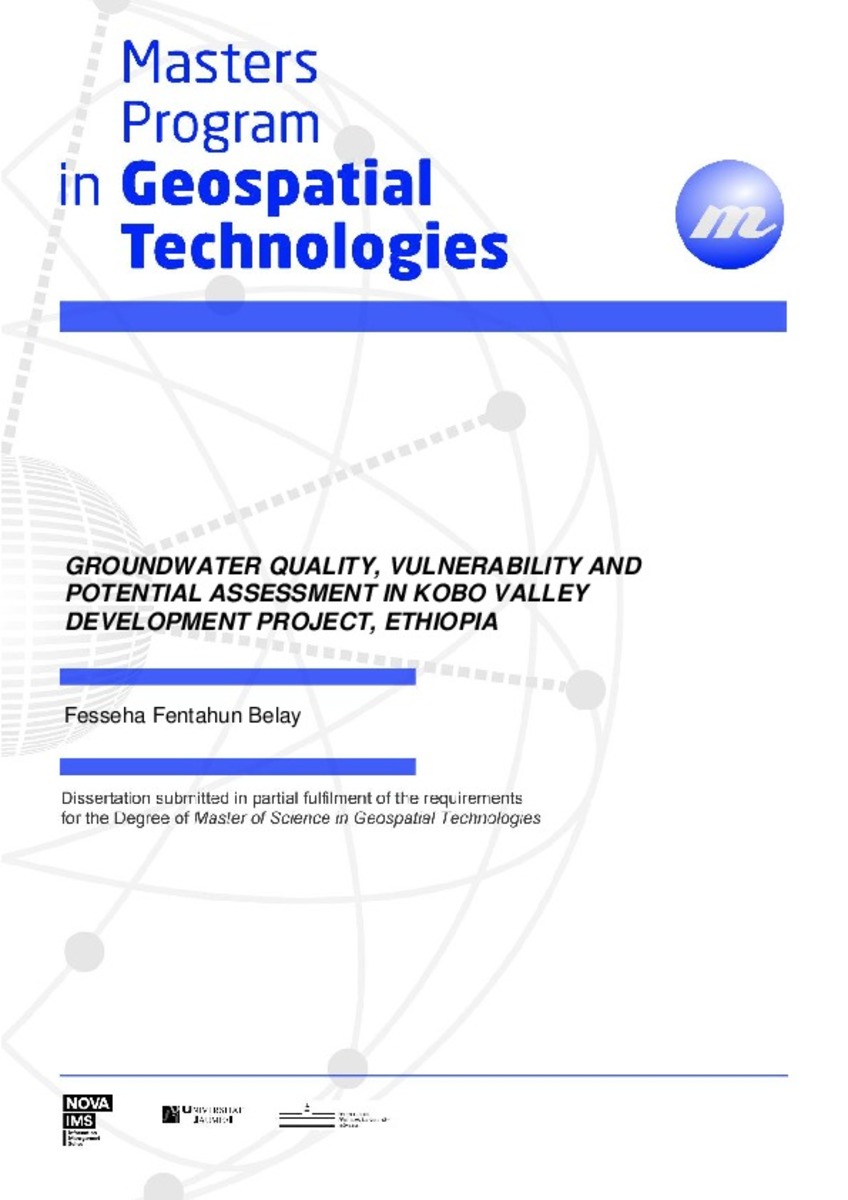Mostrar el registro sencillo del ítem
Groundwater quality, vulnerability and potential assessment in Kobo Valley Development Project, Ethiopia
| dc.contributor | Mateu, Jorge | |
| dc.contributor | Costa, Ana Cristina | |
| dc.contributor.author | Belay, Fesseha Fentahun | |
| dc.contributor.other | Universitat Jaume I. Departament de Matemàtiques | |
| dc.date.accessioned | 2015-12-02T11:11:24Z | |
| dc.date.available | 2015-12-02T11:11:24Z | |
| dc.date.issued | 2015-02 | |
| dc.identifier.uri | http://hdl.handle.net/10234/142137 | |
| dc.description | Treball de Final de Màster Universitari Erasmus Mundus en Tecnologia Geoespacial (Pla de 2013). Codi: SIW013. Curs acadèmic 2014-2015 | ca_CA |
| dc.description.abstract | This study deals with investigating the groundwater quality for irrigation purpose, the vulnerability of the aquifer system to pollution and also the aquifer potential for sustainable water resources development in Kobo Valley development project. The groundwater quality is evaluated up on predicting the best possible distribution of hydrogeochemicals using geostatistical method and comparing them with the water quality guidelines given for the purpose of irrigation. The hydro geochemical parameters considered are SAR, EC, TDS, Cl-, Na+, Ca++, SO4 2- and HCO3 -. The spatial variability map reveals that these parameters falls under safe, moderate and severe or increasing problems. In order to present it clearly, the aggregated Water Quality Index (WQI) map is constructed using Weighted Arithmetic Mean method. It is found that Kobo-Gerbi sub basin is suffered from bad water quality for the irrigation purpose. Waja Golesha sub-basin has moderate and Hormat Golena is the better sub basin in terms of water quality. The groundwater vulnerability assessment of the study area is made using the GOD rating system. It is found that the whole area is experiencing moderate to high risk of vulnerability and it is a good warning for proper management of the resource. The high risks of vulnerability are noticed in Hormat Golena and Waja Golesha sub basins. The aquifer potential of the study area is obtained using weighted overlay analysis and 73.3% of the total area is a good site for future water well development. The rest 26.7% of the area is not considered as a good site for spotting groundwater wells. Most of this area fall under Kobo-Gerbi sub basin. | ca_CA |
| dc.format.extent | 99 p. | ca_CA |
| dc.format.mimetype | application/pdf | ca_CA |
| dc.language.iso | eng | ca_CA |
| dc.publisher | Universitat Jaume I | ca_CA |
| dc.rights | Attribution-NonCommercial-NoDerivs 4.0 Spain | * |
| dc.rights.uri | http://creativecommons.org/licenses/by-nc-nd/4.0/ | * |
| dc.subject | Màster Universitari Erasmus Mundus en Tecnologia Geoespacial | ca_CA |
| dc.subject | Erasmus Mundus University Master's Degree in Geospatial Technologies | ca_CA |
| dc.subject | WQI | ca_CA |
| dc.subject | GOD Rating System | ca_CA |
| dc.subject | vulnerability | ca_CA |
| dc.subject | Geostatistical Method | ca_CA |
| dc.subject | Weighted Arithmetic Mean | ca_CA |
| dc.subject | Aquifer Potential | ca_CA |
| dc.subject | Spatial Variability | ca_CA |
| dc.subject | Weighted Overlay Analysis | ca_CA |
| dc.subject | Máster Universitario Erasmus Mundus en Tecnología Geoespacial | |
| dc.title | Groundwater quality, vulnerability and potential assessment in Kobo Valley Development Project, Ethiopia | ca_CA |
| dc.type | info:eu-repo/semantics/masterThesis | ca_CA |
| dc.educationLevel | Estudios de Postgrado | ca_CA |
| dc.rights.accessRights | info:eu-repo/semantics/openAccess | ca_CA |
Ficheros en el ítem
Este ítem aparece en la(s) siguiente(s) colección(ones)
-
TFM: Màster Universitari Erasmus Mundus en Tecnologia Geoespacial [79]
SIW013; SIK013








